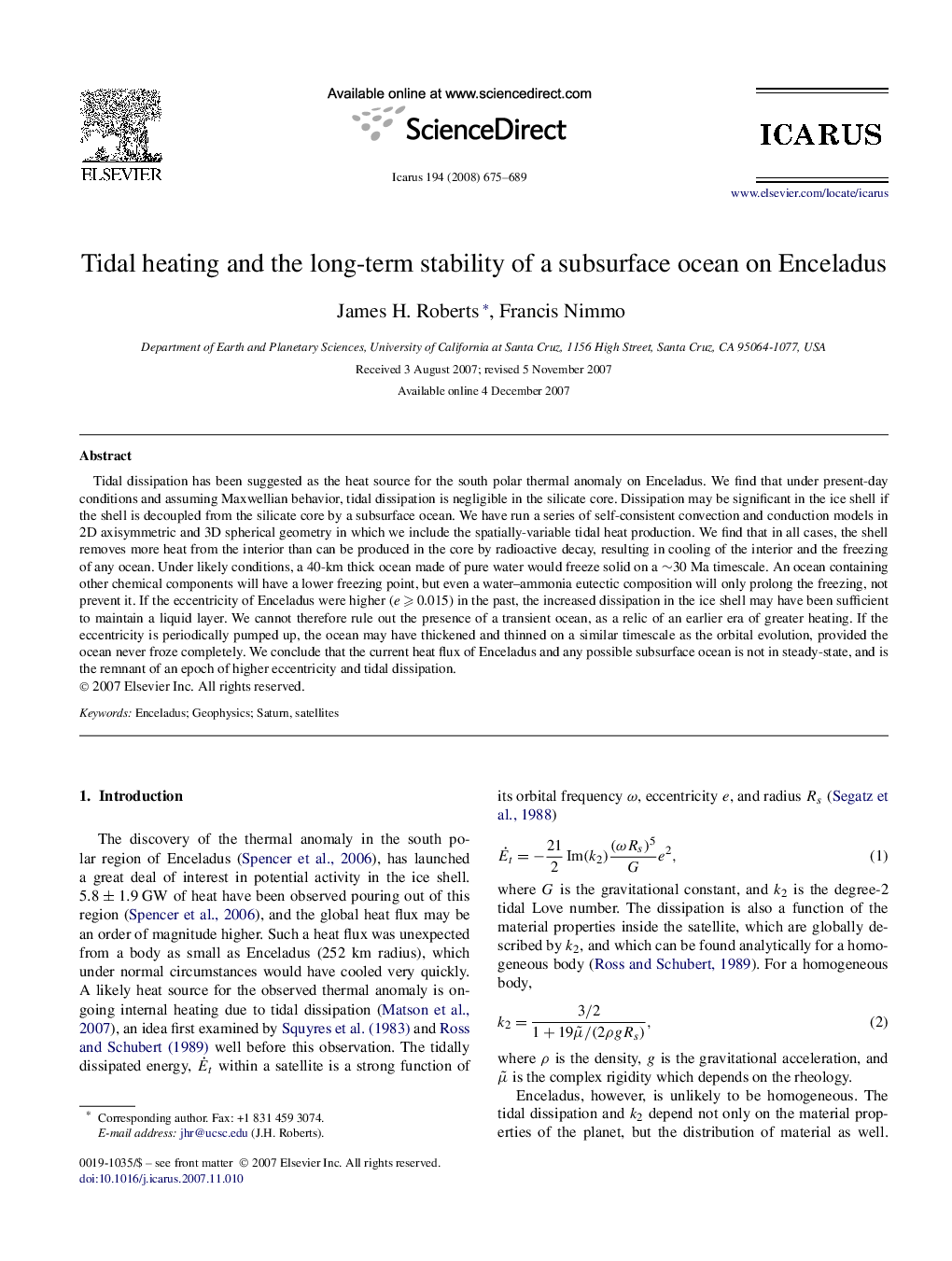| Article ID | Journal | Published Year | Pages | File Type |
|---|---|---|---|---|
| 1775175 | Icarus | 2008 | 15 Pages |
Abstract
Tidal dissipation has been suggested as the heat source for the south polar thermal anomaly on Enceladus. We find that under present-day conditions and assuming Maxwellian behavior, tidal dissipation is negligible in the silicate core. Dissipation may be significant in the ice shell if the shell is decoupled from the silicate core by a subsurface ocean. We have run a series of self-consistent convection and conduction models in 2D axisymmetric and 3D spherical geometry in which we include the spatially-variable tidal heat production. We find that in all cases, the shell removes more heat from the interior than can be produced in the core by radioactive decay, resulting in cooling of the interior and the freezing of any ocean. Under likely conditions, a 40-km thick ocean made of pure water would freeze solid on a â¼30 Ma timescale. An ocean containing other chemical components will have a lower freezing point, but even a water-ammonia eutectic composition will only prolong the freezing, not prevent it. If the eccentricity of Enceladus were higher (e⩾0.015) in the past, the increased dissipation in the ice shell may have been sufficient to maintain a liquid layer. We cannot therefore rule out the presence of a transient ocean, as a relic of an earlier era of greater heating. If the eccentricity is periodically pumped up, the ocean may have thickened and thinned on a similar timescale as the orbital evolution, provided the ocean never froze completely. We conclude that the current heat flux of Enceladus and any possible subsurface ocean is not in steady-state, and is the remnant of an epoch of higher eccentricity and tidal dissipation.
Keywords
Related Topics
Physical Sciences and Engineering
Earth and Planetary Sciences
Space and Planetary Science
Authors
James H. Roberts, Francis Nimmo,
